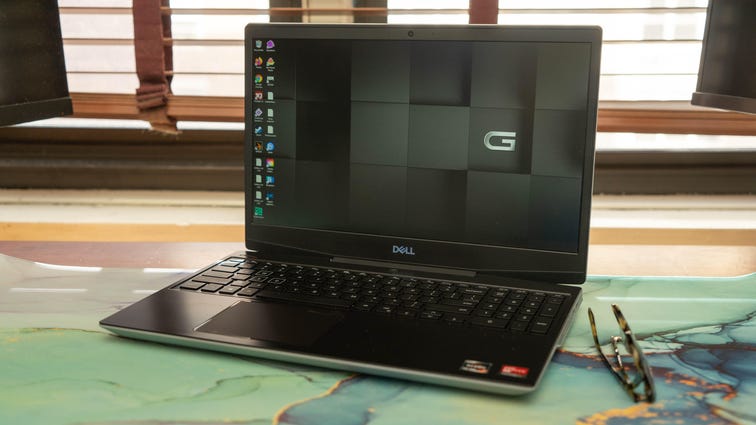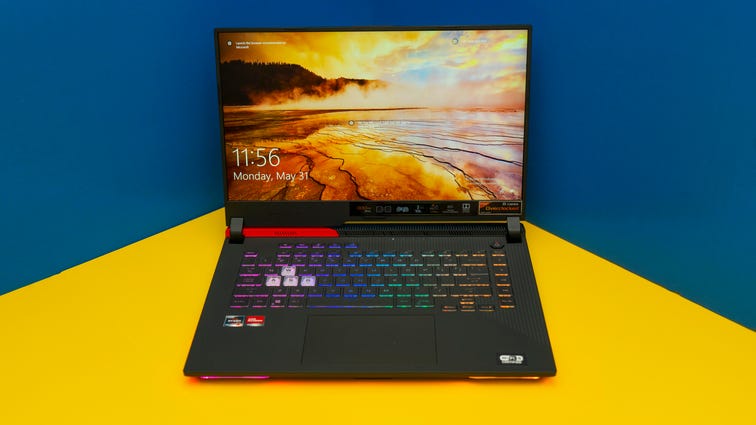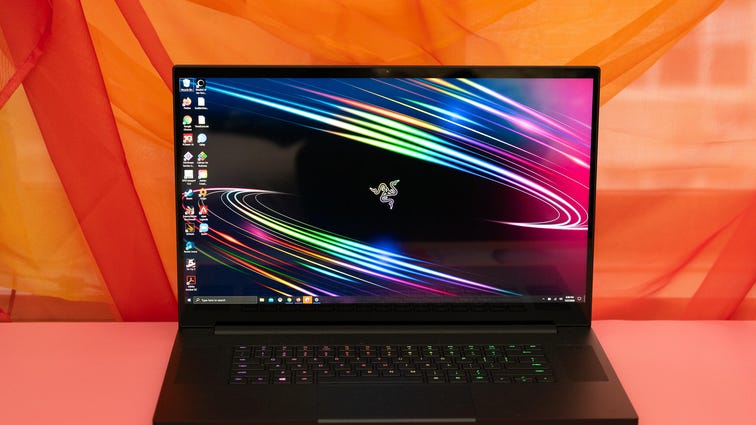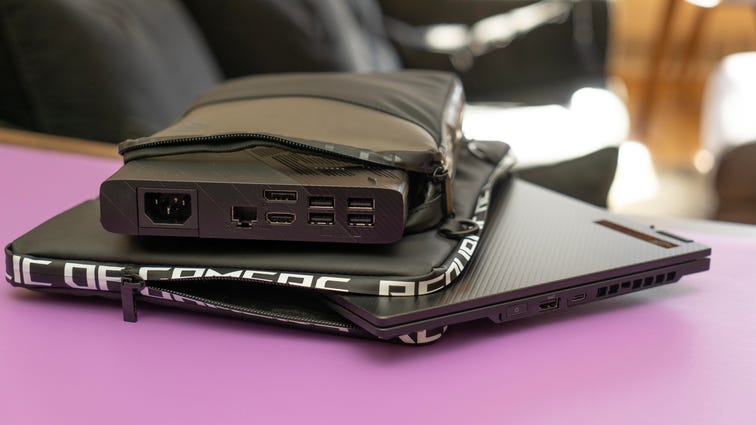Many gamers know that having the right equipment can often be as important as skill to raise your stats. A good gaming rig may cost you, but for those serious about their gaming experience, and with a budget to match, it's frequently worth it to drop some serious cash to build the ideal gaming setup. Luckily, gaming laptops have evolved to keep up with the needs of even the most intense gamers.
There's more to a decent gaming laptop than raw speed. You can pack it with the best graphics card, the fastest, most colorful display around, a gazillion-core processor, tons of fast solid-state drive storage to hold your games, and a rock-solid hard drive for secondary storage, but it can still fall short. Those powerful components may overheat at the worst moments your battery may die or you might experience an instability that impacts your gaming performance. Or maybe you don't want to always use an external mechanical keyboard with per-key RGB backlighting, but the system's WASD keys feel like mashed potatoes under your fingers.
The good news is that not all games are bottlenecked by dual cores or a last-generation GTX, so it's not a given that you'll need to bust your budget to pay for a new laptop. Budget gaming can be difficult if you're not shopping carefully, though, and we all know that there's really no such thing as a "cheap gaming laptop."
A compromise you've traditionally had to make has been battery life, which has typically lasted as little as 2 hours of nonstop gaming. You also couldn't play most complex games -- GPU- or CPU-intensive ones -- on battery power. Processors would get throttled back and screens dim during hardcore gaming sessions, so a laptop that felt nimble when connected became a slog on battery power, turning your epic battles into a battles of frustration.
Read more: The best cheap gaming laptop under $1,000
That's been changing recently, as Intel, AMD and Nvidia have concentrated on improving their power management technologies. No, you still can't play for 10 hours on battery, but now you can find some great gaming laptops with 10-hour battery lives.
Components do matter. The fastest graphics card currently available in a laptop is the Nvidia GeForce RTX 3080 with the usual Max-Q variants. The Max-Q versions run at slower frequencies than their full-size siblings -- this is to keep the noise and heat down and to help them fit into thinner designs. RTX models also accelerate ray-traced rendering and provide intelligent upscaling (also known as DLSS) where it's explicitly supported. If your favorite games don't use it, the lower-end Nvidia GTX 1660 Ti incorporates Turing, the last generation of Nvidia's technology, without the extra cost or power burden of the RT cores.

The Asus ROG Flow X13 with its optional sidekick the Mobile XG offers a blended solution for gamers: The small, lightweight laptop has a powerful AMD Ryzen 5900HS CPU and an Nvidia GTX 1650 GPU for lightweight gaming, while the external dock incorporates an RTX 3080 mobile GPU and extra connections.
Lori Grunin/CNETThe problem with the Max-Q, though, is that you have to reboot to switch between a dedicated GPU mode and the original Optimus mode, which only uses the GPU for accelerating, not actually drawing the screen. That means you can't take advantage of the Max-Q's ultrafast refresh rates with Optimus. So why not leave it on the GPU mode all the time? Because you'll frequently get poorer CPU performance and even lesser graphics performance in games that balance CPU and GPU usage rather than going all-out on the GPU.
Nvidia launched the new generation of its Max-Q architecture, which supports Advanced Optimus, last year. It's smarter, with the integrated and discrete graphics sharing (rather than switching) the pipeline to the display, so no reboot necessary. But Advanced Optimus needs a major change to system design, so laptops supporting Advanced Optimus still aren't plentiful.
AMD's latest laptop GPUs, the Radeon RX 6600M, 6700M and 6800M, don't quite reach the level of the fastest Nvidia RTX models, but the 6800M has gotten pretty close (in the one system we've tested with it so far), with performance on average falling between the RTX 3070 and 3080.
Read more: Best cheap gaming keyboards to rev up your work-from-home experience
AMD H-series processors of the Ryzen 5000 series, including new mobile Core i9 competitors, the eight-core/16-thread Ryzen 9 5900HS and 5900HX. I tested the low-power HS in the Asus ROG Flow X13 and it flies on both multi- and single-core. And the higher power HX in Asus' ROG Strix 15-inch models holds its own compared to Intel's 10th-gen i9-10900HK (I haven't yet tested any of the 11th-gen Tiger Lake-H processors, however).
More cores may help when choosing a CPU, though at the moment many games still don't use more than four, especially older ones. That's partly Intel's rationalization for its continued reliance on its old 14-nanometer architecture for the 10th-gen high-performance (H series) processors. It lets the company boost single-core clock frequencies, compared with gains it would make by moving to a smaller process technology such as Ice Lake, which is designed to support more cores on less power draw. The next generation -- Tiger Lake 10nm H series -- were announced at CES 2021 so look forward to Xe discrete graphics (beyond the low-end Xe Max).
And then there are the screens. Everyone bumped their flagship 1080p configurations to 360Hz, but for many a gamer, they're not essential: 240Hz max should be fine for those few times you can get frame rates above 240fps. Even 144Hz will do for many people, but artifacts like tearing, caused by the screen refresh rate becoming out of sync with the frame rate, depend on your games as much as your laptop brand and hardware.
Read: Best 2-in-1 PCs in 2021 for when you need a laptop and tablet in one
We're also seeing a lot more 120Hz 4K screens in the flagship models, in both 17- and 15-inch sizes, and a ton of 165Hz and 240Hz QHD (1440p) options. The latter are my favorites, balancing higher resolution -- certainly enough on a laptop screen -- with gaming friendly refresh rates.
Still with me? Great. If you're a gaming beast who wants to do a deep dive into what's out there right now and figure out which is the best gaming laptop for your desired gaming experience, check out the recommendations below. This list is periodically updated.
There's no such thing as a budget gaming laptop. But solid gaming graphics power and strong battery life are the foundation of a good gaming laptop, and the price makes this budget gaming Dell G5 15 a great bargain. It comes in two flavors, a standard Intel-based model and the AMD Ryzen-based special edition.
Asus' $1,650 all-AMD gaming laptop delivers excellent performance and battery life, with a top-of-the-line Ryzen 9 5900HX CPU and Radeon RX 6800M GPU -- and that's before you realize that the performance and components are way above its price class. It runs cool and quiet, even running close to full tilt.
I tested the early 2021 model of the Advanced, but Razer decided to switch processors and update the design after just a few months, and it's slated to be available this month. The company made so many updates, that while you can still buy that older model, I highly recommend against it.
I haven't gotten a chance to look at the new one, but Razer fixed my biggest complaints about the old design by giving it a fingerprint resistant coating, improving the palm rejection on its touchpad and upgrading to a 1080p webcam. Additionally, the chassis is about 1mm thinner as well, though only on the entry RTX 3060-based model. The updated line goes up to the Core i9-11900H processor (only on the 4K OLED model) and includes all the accompanying upgrades, including dual Thunderbolt 4 ports, PCIe Gen 4 storage and Wi-Fi 6E. Like almost everyone else, Razer's also offering the 240Hz P3-gamut QHD screen instead of the 165Hz sRGB model, which I had on my evaluation unit. Razer's understated style won't leave bored coworkers wondering what games are monopolizing your screen during meetings. They may wonder if you're overpaid, though, since this laptop isn't cheap.
Read about the mid-2021 updates to the Razer Blade Advanced.
If you're going for the best, go big. Yes, there are faster 17-inchers, but I draw the line at dual humongous power bricks. (Doesn't matter to you? Check out the Gigabyte Aorus 17X, Alienware Area-51m and other mammoth systems.) The Blade Pro is fast and provides powerful gaming performance with an Intel Core i7-10875H Processor and NVIDIA GeForce RTX 20 Series super graphics, but doesn't sacrifice its svelte figure.
While I recommend getting this Blade Pro laptop with its 4K-resolution display option for creators, gamers will want to get the display with a 300Hz refresh rate that Razer offers for this model.
Asus pairs an ultraportable 13-inch two-in-one with a relatively powerful AMD CPU with an external GPU dock equipped with a top-of-the-line Nvidia GeForce RTX 3080 mobile processor and the result is an incredibly flexible system for both work and play that outperforms many bigger, clunkier gaming laptops. Because it's a two-in-one you can comfortably use an external gaming keyboard without the built-in keyboard getting in the way. Sadly, I can't find it in stock anywhere at the moment.
You can add some custom graphics to make the generic chassis a little more stylish, but it's the wealth of component choices that makes this 17-inch gaming laptop an appealing buy for a gaming beast -- though not a cheap one, starting at $2,200. It may be somewhat thin, but you can cram it with up to an Nvidia RTX 3080 GPU, 4K 100% Adobe RGB display and Core i7-10870H.
More for gamers
from CNET https://ift.tt/3cgGefV
via IFTTT











No comments:
Post a Comment